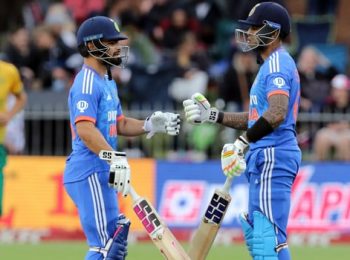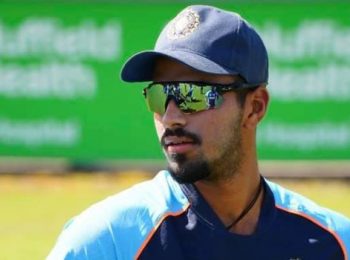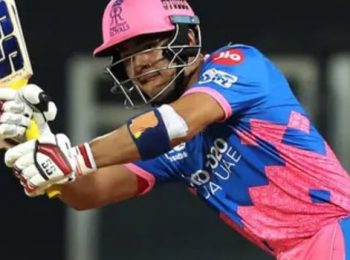The Asia Cup being played as a T20 series this year is a welcome move. Too often, cricket scheduling lacks common sense, but this decision feels right, especially with the T20 World Cup just a few months away. Having a tournament in the same format serves as ideal preparation for the participating teams and adds to the excitement for fans around the world.
Among all the sides, India stand out as clear favourites. They appear to have most, if not all, bases covered, making them the strongest team on paper. At the top of the order, Abhishek Sharma and Sanju Samson are expected to open, followed by Shubham Gill at number three. Suryakumar Yadav slots in at four, with Tilak Varma at five and Hardik Pandya at six. This combination gives India a powerful top order along with reliable all-round options. In the spin department, Kuldeep Yadav and Varun Chakaravarthy provide depth and variety. The only position that might require some thought is number seven, which will depend on the conditions in the UAE. Options are available in form of Shubham Dube, Axar Patel, or Harshit Rana, and the final call will likely be based on balancing the batting and bowling line-up, especially with the new ball.
Pakistan, as always, bring a formidable challenge. A big selection call has been made with No Babar Azam and Mohammad Rizwan in the swuad, while Saim Ayub’s presence adds great strength at the top of the order. Currently in good form from a mini-tournament, Ayub has the ability to make a significant impact when he is at his best.
Pakistan’s bowling remains their biggest strength, with Shaheen Shah Afridi and Harris Rauf leading the attack. Abrar, a mystery spinner, could play a key role against sides unfamiliar with his style. His variations may prove difficult to pick and could give Pakistan a crucial edge in the middle overs. Overall, they look like a side capable of going deep into the tournament.
Bangladesh also come into the tournament with a group of exciting players who have the potential to trouble any team. While they may not start as favourites, expectations remain high for some standout performances from their emerging stars.
Afghanistan continue to evolve as a serious contender on the world stage. After an impressive run in the last World T20, they now boast a settled team where each player understands his role. Rashid Khan, back in top form after a strong stint in the UK’s domestic circuit and The Hundred, will captain the side and lead their spin-heavy attack. The likes of Mohammad Nabi and Azmatullah Omarzai add experience and strength in the middle order, while Fazalhaq Farooqi with the new ball remains a valuable, though often underrated, asset.
Afghanistan are no longer just outsiders; they are now viewed as a team capable of genuine upsets and a potential challenger for the title.
The UAE team enters as a bit of an unknown entity. This is their first qualification for the Asia Cup in a decade, and the rise of their franchise league, the ILT20, may have played a role in their development. Muhammad Waseem will be a key figure at the top of the order, and much of their success will depend on his performances. For UAE, the tournament is about gaining valuable experience and testing themselves against some of the world’s best cricketing nations.
For Oman, this is a landmark moment as they make their debut appearance at the Asia Cup. With four uncapped players in the squad, they will rely heavily on experienced names like Jatinder Singh, who has 125 international caps, and Shakeel Ahmed, a skilled left-arm spinner known for his control. This tournament will be a learning experience for Oman as they take on elite opposition for the first time on such a stage.
Hong Kong, like Oman, will rely on a few senior players to guide their young squad. Their captain, Yasim Murtaza, has been a regular in T20 internationals for three years and now takes on the added responsibility of leadership. For their younger players, this tournament represents a golden opportunity to grow and gain exposure.
Sri Lanka, meanwhile, have been playing competitive cricket in Zimbabwe and will come into the tournament well-prepared. Pathum Nissanka has been in excellent form at the top of the order and will be one to watch. Alongside him, Sri Lanka’s experienced and high-quality bowling attack could cause plenty of problems for opposing teams.
The tournament format adds to the excitement, with teams split into two groups. The top two from each group advance to the Super 4s, where they face each other again. This structure raises the thrilling possibility of India and Pakistan meeting up to three times— once in the group stage, again in the Super 4s, and potentially in the final. Such a scenario would be a massive draw for fans and a highlight for world cricket.
The Asia Cup is well set up to deliver a thrilling competition. India enters as clear favourites, with their balanced line-up making them the team to beat. However, Pakistan’s strength and Afghanistan’s rise mean they cannot be discounted. With the added drama of potential multiple India-Pakistan clashes and a format designed to keep the stakes high, the tournament promises to be both fascinating and fiercely competitive. Most importantly, the decision to hold it as a T20 series perfectly aligns with the upcoming World Cup, making this an ideal lead-up to one of cricket’s biggest events.



























